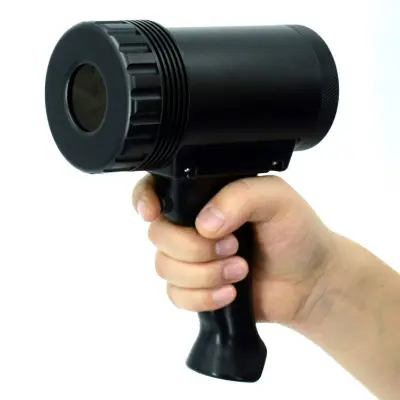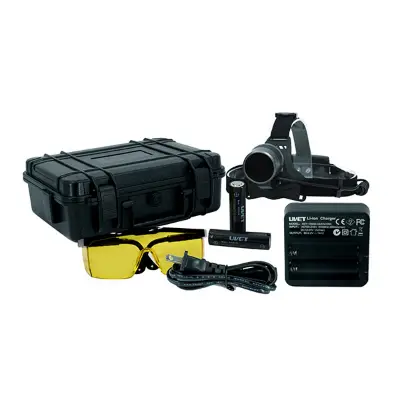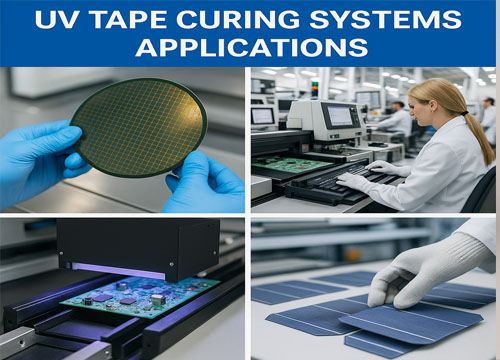How Fast is UV LED Curing? Unlocking Rapid Industrial Speed
How Fast is UV LED Curing?
How fast is UV LED curing? The cure time for inks, coatings, and adhesives can take milliseconds to a couple of seconds with the ultrafast, effective process of UV LED curing. Unlike traditional mercury lamps that use UV technologies, UV LED systems provide full-spectrum UV (typically 365-405 nm) light, and the photoinitiators in the formulation get activated immediately.
Some of the cure time factors are:
• If more irradiance is used, the time taken decreases, and curing speed is heavily reliant on intensity. For example, a UV LED output of 8-16 W/cm² can cure so a lot of inks can cure in under 1 second.
• More opaque or thicker materials pose a need for more energy to fully polymerize. Take 600-800 mJ/cm² for example.
• Material features like the thickness and type of ink photoinitiator, along with adhesive and coating, determine the speed of cure.
• At a proper system configuration, conveyor speeds can be set to 50-150m per min with LED systems.
UV LED curing has accelerated systems for the production of medical devices, electronics, and printing because of reduced heating and improved speed and durability. The average faster print time UV LED can provide compared to conventional methods is up to 10 times.
Comprehending the Speed of Curing for UV LED
UV LED curing is a photochemical operation that uses ultraviolet light to trigger a reaction in a photo-initiator that leads to crosslinking polymerization of inks, adhesives, or coatings. In contrast to earlier methods of curing, with UV LED curing, full cure is achieved in milliseconds to seconds, depending on different parameters.
Speed Influencing Factors on Curing
1. Type of Photoinitiator
Different photoinitiators react to certain intensities and wavelengths. It is important to select the right photoinitiator in order to achieve efficient curing.
2. Thickness of the Material
Having thicker materials requires spending more energy in order to fully cure them. Modifying energy density helps achieve the right level of thickness.
3. Substrate Material
The UV penetration is affected by the substrate's clarity and absorption properties. Absorbing materials will require changes to irradiance or exposure time.
4. Power of UV LED Lamp
More powerful lamps can deliver more energy, reducing the curing time; the lamps also have to be balanced to avoid damaging the substrate.
5. Design of the System
Curing uniformity and efficiency is affected by reflectors, cooling mechanisms, and lamp arrangement.
6. Temperature of The Environment
External temperature impacts the material viscosity and the efficiency of the process. Consistent temperature gives an efficient result.
7. Distance Between the Lamp and Substrate
Moving closer increases irradiance, but this also increases the chances of overheating. Changing the distance within limits can help balance the speed of curing while ensuring that the material is not compromised.
8. Conveyor Speed
In automated systems, the speed of the conveyor changes the amount of time available for exposure. To guarantee efficiency in curing, faster speeds need to have higher irradiance.
Measuring and Testing Curing Speed
1. UV Radiometers
UV curing devices like ILT800 Cure Right Radiometer measure irradiance and energy density to ensure the proper curing of materials is delivered consistently.
2. UV Integrators
These tools help validate and optimize processes by measuring the total amount of UV energy delivered over time.
3. Cure Test Methods
The degree of cure, along with surface stickiness, is measured using the MEK double rub test or mar resistance test and FTIR spectroscopy.
Applications and Benefits of Fast UV LED Curing
1. Printing Industry
Enables high-speed printing with instant drying, improving production rates and minimizing downtime.
2. Coatings and Adhesives
Benefits the automotive and electronics industries by improving throughput in rapid curing manufacturing.
3. Medical Devices
Curing with low heat is critical for medical components sensitive to heat for product integrity.
4. Energy Efficiency
Unlike traditional mercury lamps, UV LED systems use less energy, providing savings and being environmentally friendly.
Differences Between UV LED Curing and Traditional Methods
Over the years, traditional mercury lamp curing systems have remained popular, but their higher energy usage, protracted warm-up durations, and mercury environmental concerns continue to raise concerns.
In contrast, UV LED curing has the following advantages:
• Instant Start: No warm-up time
• Enhanced Cost Effectiveness: If properly maintained, UV LEDs can last up to twenty thousand hours, which reduces maintenance costs.
• More Energy Efficient: Compared to traditional systems, there are higher efficiency rates (up to eighty per cent) in energy usage.
• Eco-Friendly Components: There are no harmful materials, such as hazardous mercury.
Adjustment of UV LED Curing Speed
Choosing the Right Photoinitiators: Ensure provided photoinitiators have compatible wavelengths with the UV LED.
Adjust Irradiance and Exposure Time: Strike a balance to ensure that there is neither over-curing nor under-curing.
Maintain Environmental Conditions: Make sure temperatures and humidity levels are maintained.
Participate in Preventive Maintenance: Ensure regular cleaning and pre-use calibration of the UV LED system.
Methodical Validation: Use integrators for process validation.
Advantages
• Enhanced Production Rates: Increased production because more parts or products can be processed in a shorter amount of time.
• Reduced Factory Footprint: Without the requirement for long drying tunnels, more factory floor space is available.
• Lower Energy Consumption: Compared to traditional mercury lamps, UV LEDs are highly efficient from an energy usage perspective. They waste very little electricity, leading to a greater efficiency rating (UV LED).
• Immediate Post Processing: Cured materials can often be stacked or processed immediately after curing, which aids in streamlining workflows.
• Environmentally Friendlier: In comparison to conventional methods, UV LED systems have no solvents, ozone, or mercury, greatly increasing their environmental friendliness.
• Curing Heat-Sensitive Substrates: Unlike traditional lamps, UV LEDs emit low heat, which allows for the use of delicate thin plastics or films as well as certain electronic components that are prone to deformation or degradation.
Conclusion
Every industry is experiencing transformative benefits due to UV LED curing technology. It is efficiently reliable, profoundly fast, and provides unmatched results. It is unparalleled in speed and energy economy, from sub-second cure times to traditional curing methods. It is also dependent on the parameters of irradiance, energy dose, material properties, and system design, but with the proper configuration, it is possible to greatly increase production rates while maintaining a level of accuracy. To get more information about UV LED curing technology, visit us at UVET Technology.






